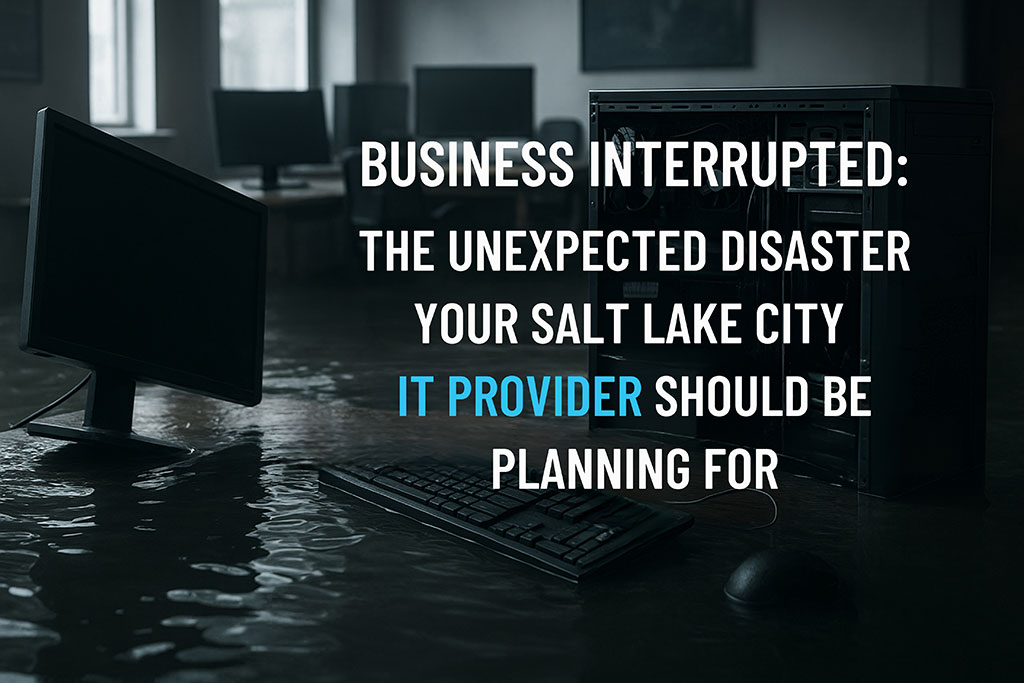
A storm knocks out power. A ransomware attack locks you out of your EMR. A pipe bursts and floods your server room. These aren’t dramatic “what if” scenarios — they’re everyday disruptions happening to healthcare providers across Salt Lake City.
The reality? Most medical practices assume a basic backup is enough. But when patient charts are inaccessible, staff can’t log into systems, or your billing halts mid-cycle, a copy of your data isn’t enough to keep you operational.
If your current IT provider isn’t preparing you for these moments — with a true business continuity plan, not just a backup — you’re not protected. You’re just lucky so far.
Backups Alone Won’t Save Your Practice — Continuity Will
Let’s get clear: you do need backups. But what you really need is continuity — the ability to keep delivering patient care, processing insurance, and documenting safely while the crisis is happening.
A medical practice without continuity planning faces:
- Missed appointments
- Delayed treatments
- HIPAA risks
- Lost revenue
- Damaged patient trust
Your data might be saved somewhere — but if you can’t access your EMR, use your phones, or work remotely, you’re still down.
Backups vs. Business Continuity — Here’s the Difference
Most practices we meet think these two terms mean the same thing. They don’t.
- Backups restore data.
- Continuity keeps your clinic running.
A real continuity plan addresses:
- How quickly can we restore access to our EMR?
- What’s our plan if the office is inaccessible?
- Can our staff work securely from home?
- Who leads the recovery process?
- Is this plan compliant with HIPAA?
It also includes:
- Off-site, encrypted, immutable backups
- Defined Recovery Time (RTO) and Recovery Point Objectives (RPO)
- Remote access strategies with full compliance
- Redundant systems for diagnostics, billing, and communications
- Routine disaster simulations and testing
If your IT provider hasn’t walked you through these components, then you’re not prepared — not in healthcare, not in Salt Lake City, and not under HIPAA.
Still Think This Won’t Happen to You?
Here’s what’s happening to practices around the country:
- A small cardiology clinic in the South was hit with ransomware, only to discover their “backups” had never been tested. They lost 3 years of patient data.
- A pediatric office in California had their server room wiped out by a wildfire — and had no cloud recovery plan in place. They were closed for months.
- A family practice in the Midwest faced $100,000 in penalties after a simple power surge corrupted unprotected EMR files.
And here in Salt Lake City? Practices are vulnerable to earthquakes, floods, and yes — human error. It’s not about fear. It’s about readiness.
Ask Your Current IT Provider These 5 Questions Today
- How quickly can we recover if our EMR is encrypted by ransomware?
- Are our backups regularly tested — and are they HIPAA-compliant?
- What’s the plan if a flood or fire shuts down our office tomorrow?
- Can our team switch to remote care without violating compliance?
- Will we lose billing, schedule, or diagnostics data if disaster hits?
If their answers are vague, slow, or overly technical — that’s your red flag.
Disasters Are Inevitable. Downtime Doesn’t Have to Be.
At Qual IT, we specialize in Managed IT Services for medical practices in Salt Lake City. We don’t just fix tech. We build resilience into your systems — so when the unexpected hits, your staff can log in, your patients stay informed, and your practice doesn’t skip a beat.
Click here to book your FREE Network Assessment.
Let’s review your current disaster recovery plan (or create one from scratch) and ensure your continuity strategy is as strong as your commitment to patient care.



